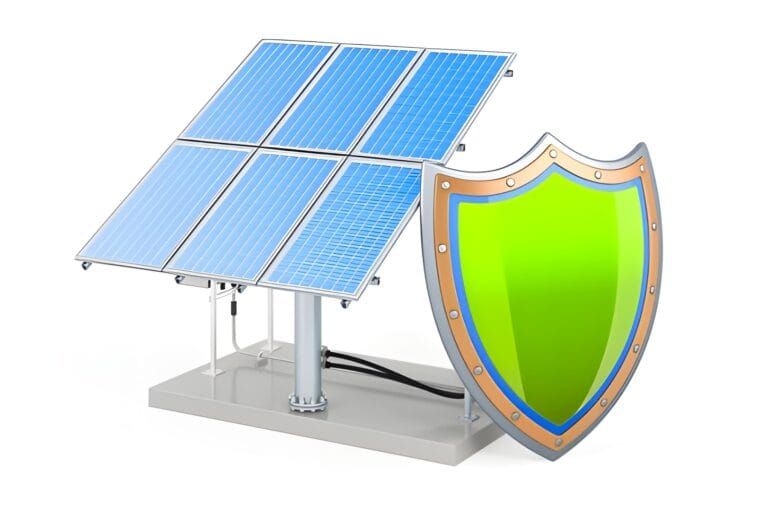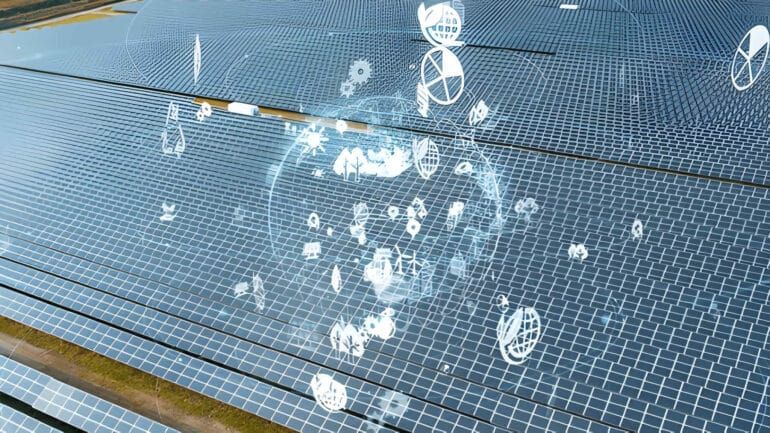Introduction
In this comprehensive guide, we will delve into the importance of solar panel maintenance and provide step-by-step instructions on how to clean solar panels effectively. As the world shifts towards sustainable energy sources, solar panels have become a common sight on rooftops and in solar farms. These photovoltaic systems harness the power of the sun to generate electricity, offering an eco-friendly alternative to traditional energy sources. However, to ensure maximum efficiency and longevity, it’s crucial to understand how to clean solar panels properly.
The Importance of Clean Solar Panels
Solar panels function by converting sunlight into electricity through photovoltaic cells. Over time, these cells can accumulate dirt, dust, bird droppings, pollen, and other debris, hindering the absorption of sunlight. The efficiency of solar panels decreases when they are covered in grime, leading to a reduction in energy production. Regular cleaning not only ensures optimal performance but also extends the lifespan of the solar panels, protecting your investment in renewable energy.
When to Clean Solar Panels
The frequency of solar panel cleaning depends on various factors such as the local climate, the surrounding environment, and the tilt of the panels.

In general, it is recommended to clean solar panels at least twice a year. However, areas with high levels of dust, pollen, or bird activity may require more frequent cleaning. Additionally, it’s advisable to inspect the panels after severe weather events like storms to ensure they are free from debris.
Materials Needed for Cleaning
- Soft-bristle brush or sponge
- Hose or bucket of water
- Mild detergent or solar panel cleaning solution
- Squeegee or soft cloth
- Safety equipment (gloves and safety glasses)
Step-by-Step Guide to Cleaning Solar Panels
1. Safety First
Before starting the cleaning process, ensure your safety by wearing gloves and safety glasses. If your solar panels are installed at a height, use appropriate safety equipment such as a ladder or harness.
2. Check the Manufacturer’s Guidelines
Refer to the manufacturer’s guidelines for cleaning and maintenance. Some solar panel manufacturers may have specific recommendations or restrictions regarding cleaning agents and methods to avoid damage.
3. Remove Loose Debris
Use a soft-bristle brush or a sponge to gently sweep away loose dirt and debris from the surface of the solar panels. Avoid using abrasive materials or brushes that could scratch the glass surface.
4. Hose Down the Panels
Rinse the solar panels with a hose to remove any remaining dirt. Alternatively, you can use a bucket of water and a soft cloth to wipe down the panels. Ensure that the water is not too hot, especially if the panels are hot from exposure to sunlight.
5. Prepare a Cleaning Solution
Mix a mild detergent with water or use a specialized solar panel cleaning solution as recommended by the manufacturer. Avoid using abrasive or harsh chemicals that could damage the panels.
6. Apply the Cleaning Solution
Dip the soft-bristle brush or sponge into the cleaning solution and gently scrub the solar panels. Focus on areas with stubborn stains or bird droppings. Take care not to press too hard, as excessive force may cause damage.
7. Rinse Thoroughly
After scrubbing, rinse the solar panels with clean water to remove any soap residue. Ensure that all cleaning solution is thoroughly washed away to prevent a film from forming on the panels.
8. Dry the Panels
Use a squeegee or a soft cloth to dry the solar panels. This step helps to prevent water spots and ensures a clean, streak-free surface.
9. Monitor for Efficiency
After cleaning, monitor the solar panel’s energy production to ensure that it returns to optimal levels. Keep an eye on any changes in performance, as this may indicate potential issues with the system.
Use Distilled Water
Whenever possible, use distilled water for cleaning solar panels. Tap water may contain minerals that could leave deposits on the glass, reducing the panel’s efficiency over time. Distilled water helps prevent mineral buildup, ensuring a clear and unobstructed surface.
Clean Early or Late in the Day
Optimal cleaning times are early in the morning or late in the evening when the panels are cooler. Cleaning during peak sunlight hours may cause the cleaning solution to evaporate quickly, leaving behind streaks or residue.
Invest in a Solar Panel Cleaning Kit
Consider purchasing a specialized solar panel cleaning kit that includes a gentle cleaning solution, a soft brush, and a squeegee designed for solar panels. These kits often provide all the necessary tools for effective cleaning without the risk of damage.
Regular Inspection for Damage
While cleaning, take the opportunity to inspect the solar panels for any signs of damage, such as cracks or loose connections. Early detection of issues can prevent further damage and ensure the optimal functioning of the entire solar panel system.
Consider Professional Cleaning Services
In some cases, especially for large solar installations or hard-to-reach panels, hiring professional cleaning services may be a practical option. These professionals have the expertise and equipment needed to clean panels efficiently and safely.
Avoid Pressure Washers
Pressure washers can potentially damage solar panels by applying too much force. Stick to gentle cleaning methods using brushes or sponges to prevent scratches or cracks on the glass surface.
Check Local Regulations
Before using any cleaning solution, be aware of local regulations regarding water usage and chemical disposal. Some areas may have restrictions on the use of certain cleaning agents, so ensure that your cleaning methods comply with environmental guidelines.
Monitor Weather Conditions
Consider weather conditions when planning your cleaning schedule. Cleaning solar panels just before a rain shower may not be the most efficient use of your time, as rain can naturally wash away light dirt and dust.
Utilize a Soft Broom for Ground-Mounted Panels
If your solar panels are ground-mounted, a soft broom with an extended handle can be useful for removing loose debris without the need for climbing. Sweep gently to avoid scratching the panels.
Document Your Cleaning Schedule
Keep a record of your solar panel cleaning schedule. Note the dates of each cleaning session and any observations regarding the condition of the panels. This documentation can be valuable for tracking the long-term performance of your solar panel system.
Stay Informed About Technological Advancements
Keep abreast of advancements in solar panel technology. New developments, such as self-cleaning panels or improved coatings, may reduce the need for manual cleaning in the future. Staying informed allows you to leverage emerging technologies for more efficient maintenance.
Conclusion
Regular cleaning is essential to maintain the efficiency and longevity of solar panels. By following these step-by-step instructions and adhering to safety guidelines, you can ensure that your solar panels continue to harness the sun’s energy effectively. Incorporating solar panel maintenance into your routine not only maximizes energy production but also contributes to the sustainability of renewable energy sources, making a positive impact on both your wallet and the environment.







